#CampaignOptimization
Explore tagged Tumblr posts
Text
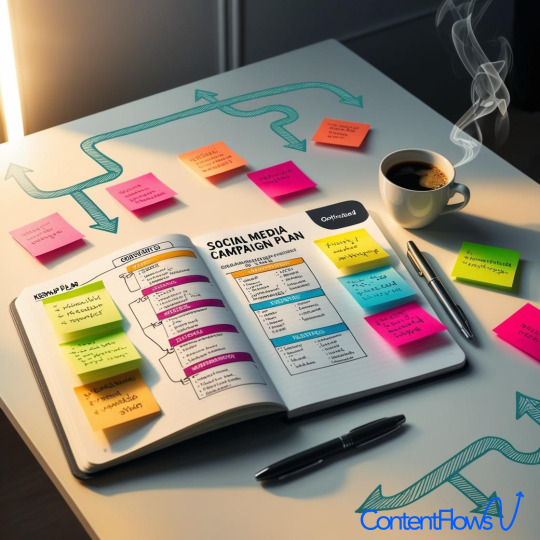
📊 Optimizing Social Media Campaigns with AI Content Flows!
Successful social media campaigns require strategic planning, engaging content, and real-time optimization to maximize impact. However, keeping up with audience trends, performance metrics, and content consistency can be overwhelming. AI Content Flows (ACF) simplifies this process by streamlining content creation, analytics, and campaign adjustments, ensuring higher engagement and better results.
How AI Content Flows Enhances Social Media Campaigns:
Automated Content Generation – Create high-quality, campaign-specific posts, captions, and ad copy effortlessly.
Performance-Driven Insights – Track key engagement metrics and optimize posts based on real-time data.
SEO & Hashtag Optimization – Ensure maximum reach by integrating trending keywords and strategic hashtags.
Multi-Platform Adaptation – Customize content for different social media channels while maintaining brand consistency.
A/B Testing & Refinement – Easily experiment with variations of posts to identify the best-performing content.
💡 From product launches to awareness campaigns, AI Content Flows helps brands execute high-impact social media strategies with minimal effort.
📢 Boost engagement and streamline your campaigns—let AI Content Flows optimize your social media strategy today!
🌐 Learn more at www.aicontentflows.tech
#SocialMediaMarketing#AIContentFlows#CampaignOptimization#MarketingAutomation#EngagementStrategy#ContentPerformance
0 notes
Text
Maximizing ROI with Automated Bidding Strategies
In the fast-paced world of digital advertising, staying ahead of the competition requires not just creativity but also efficiency. One of the most powerful tools for enhancing advertising performance and maximizing ROI (Return on Investment) is automated bidding. With the increasing complexity of digital ad platforms and the growing volume of data, manual bidding strategies are often no longer enough. Automated bidding can help advertisers make smarter, data-driven decisions in real time, boosting both performance and cost efficiency.

What is Automated Bidding?
Automated bidding refers to using algorithms and machine learning technology to automatically adjust your bids for ad placements in real time. Rather than manually setting and adjusting bids for each keyword or campaign, automated bidding systems make decisions based on a variety of factors such as competition, device type, location, time of day, and historical performance. The goal is to optimize the bids for the best possible outcome, ensuring that your budget is being spent effectively.
How Automated Bidding Works
Automated bidding platforms, like Google Ads and Microsoft Advertising, use advanced algorithms to adjust bids according to predefined goals. These platforms assess various signals, including user behavior, device, location, and past interactions, to determine the optimal bid for each auction.
For example, in Google Ads, there are several bidding strategies you can use, including:
Maximize Conversions: Google automatically adjusts bids to get as many conversions as possible within your budget.
Target CPA (Cost Per Acquisition): The system automatically adjusts bids to achieve an average cost per acquisition.
Target ROAS (Return on Ad Spend): Bidding is optimized to generate the highest return on ad spend based on your desired ROAS.
Enhanced CPC (Cost Per Click): Google adjusts your manual bids in real-time to increase the likelihood of conversions while keeping within your CPC limits.
Why Automated Bidding Maximizes ROI
Real-Time Adjustments: Automated bidding strategies enable real-time adjustments based on current data. For example, if a certain ad is performing well or underperforming, the system can instantly adjust bids to capitalize on the opportunity.
Data-Driven Decisions: Automated systems analyze vast amounts of data that would be impossible for a human to process manually. They use this data to predict which factors are most likely to drive conversions, ensuring your budget is allocated in the most efficient way possible.
Cost Efficiency: With automated bidding, you can optimize campaigns for specific goals like maximizing conversions, lowering CPA, or achieving a set ROAS. This helps advertisers avoid wasting money on underperforming ads and ensure that every dollar spent contributes toward achieving the set goals.
Bid Optimization Across Multiple Channels: Automated bidding can be applied across multiple platforms and channels, whether it’s search, display, or social media advertising. This makes it easier to scale campaigns while maintaining control over costs and performance.
Minimized Human Error: Manual bidding often involves mistakes due to oversight, fatigue, or limited knowledge of market trends. Automated bidding removes human error from the equation, leading to more consistent and accurate bid adjustments.
Key Considerations for Maximizing ROI with Automated Bidding
Set Clear Objectives: Before adopting automated bidding, ensure your goals are well-defined. Whether you want to increase conversions, drive traffic, or improve brand awareness, automated bidding works best when aligned with your overall marketing objectives.
Choose the Right Strategy: Not all automated bidding strategies are created equal. Carefully assess the options available (Maximize Conversions, Target CPA, Target ROAS, etc.) and select the one that best suits your goals.
Monitor Performance Regularly: While automated bidding can significantly reduce the need for manual intervention, it’s still important to monitor your campaigns regularly. Automated bidding is only as good as the data it receives. Make sure your campaigns are on track and adjust goals or strategies if necessary.
Leverage Testing: To get the most out of automated bidding, conduct A/B testing to compare different strategies and see what delivers the best results. Automated bidding can help you experiment with various approaches without requiring significant time or resources.
Consider Seasonal Adjustments: During peak times (such as holidays or special events), you may want to tweak your automated bidding strategies to take advantage of increased demand. Ensure that your automated campaigns remain flexible to accommodate these changes.
Conclusion
Automated bidding has revolutionized digital advertising by providing a way to optimize campaigns efficiently and effectively. By leveraging these strategies, advertisers can maximize their ROI, reduce human error, and ensure they are making data-driven decisions that deliver results. Whether you're new to automated bidding or looking to fine-tune your existing campaigns, adopting the right strategy and regularly optimizing your approach can lead to greater success in achieving your advertising goals.
#AutomatedBidding#MaximizeROI#DigitalAdvertising#PPCStrategies#GoogleAds#TargetROAS#CostPerAcquisition#AdTech#MarketingAutomation#BidOptimization#AdSpend#OnlineMarketing#CampaignOptimization#SmartBidding
0 notes
Text
How Do You View Your UTM Tracking in Google Analytics?
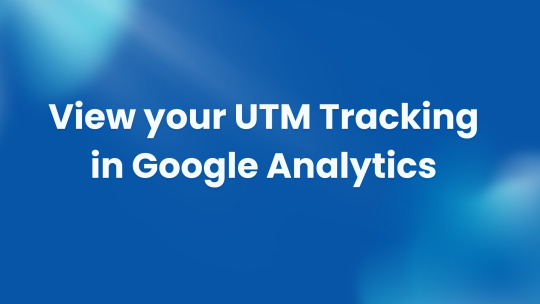
If you’re running marketing campaigns, you need to see how they’re performing. One of the most effective methods of doing so is through UTM tracking. But if you wonder “how do I see my UTM tracking on Google Analytics?, don’t panic — we’ll take you through the process step by step.
What is UTM Tracking?
UTM tracking means you add special tags (UTM parameters) to the links you share in your campaigns. This tags allow Google Analytics to identify where your visitors came from and how the go on your website.
For instance, if you’re running an ad on Facebook you’d likely want to know how many individuals clicked that ad and visited your website. UTM tracking provides you with this information, so you know which of your campaigns are performing better than others.
Understanding How UTM Parameters Work in Google Analytics
With UTM parameters added to a URL, Google Analytics understands the little tags and segments that traffic data accordingly.
Here are the most popular UTM parameters:
utm_source: Indicates the source of the flow (such as Facebook or an email).
utm_medium: Indicates type of marketing (e.g., social media, paid ads, email)
utm_campaign: This helps you identify what specific campaign is driving traffic (e.g., summer sale).
utm_term: Records used keywords in paid ads (predominantly for search campaigns).
utm_content: For tracking different types of content or ads (such as an image vs. a text link).
These UTM tags allow you to track detailed data about the origins of your website traffic and which campaigns are performing best.
View UTM Tracking in Google Analytics
How do I check my UTM tracking in Google Analytics? Here’s how:
Log into Google Analytics.
Click on Acquisition in the left-hand menu.

In the left navigation, select traffic acquisition & the click session campiagn

You will see a list of campaigns, and details retrieved from your UTM parameters such as utm_source, utm_medium, and utm_campaign.
This report provides you every information you need to know regarding your traffic sources and it is an easy way to view the performance.
Analyzing Your UTM Data
Now that you understand how to see your UTM data in Google Analytics, it’s time to learn what that means. Focus on these key metrics:
Sessions: The number of visitors to your website from each campaign.
Bounce Rate: How much are visitors actually engaging with your site or returning quickly?
Conversions: Are visitors taking any action, such as subscribing to your newsletter or buying a product?
This can help you determine successful campaigns and ones that may need to be revised.
Common UTM Tracking Issues
Things don’t always work out with UTM tracking. Here are some common problems and how to resolve them:
Missing UTM Parameters: If you aren’t seeing your UTM tags, take a look at your URLs. Check that you’ve added the correct UTM parameters.
Data Not Showing Up: Data can take a couple of hours to populate in Google Analytics. Wait and try again later.
Campaign Confusion: If you do notice some egregious results, just make sure you’re using similar naming conventions when generating your UTM parameters (i.e. always write “facebook_ad” instead of switching it up with “fb_ad” or “social”).
Best Practices for UTM URL Tracking
Here are tips to maximize the value of UTM tracking:
Be consistent: Always use the same names for your UTM parameters. Then you will have clean, readable data.
Be Specific: Instead of general terms like “email” or “social,” use more specific nomenclature in your names, such as “email_june_newsletter” or “facebook_summer_sale.”
Test Your Links: Always test your UTM URLs and ensure that the tracking is working as intended before you blast your campaigns.
Final Thoughts on UTM Tracking in Google Analytics
With all of this being said, now that you understand how to view UTM tracking on Google Analytics, you'll be able to leverage this tool to the fullest and optimize your campaigns. Thus, by tagging UTM parameters to your links and inspecting the data on Google Analytics, you’ll get an insight into what’s working, and what should better be improved.
Get started today with UTM tracking, and see how it can help you make informed marketing decisions!
Questions regarding UTM tracking or Google Analytics? Drop a comment or contact us to let us know how we can support you!
#UTMTracking#GoogleAnalytics#CampaignTracking#MarketingAnalytics#UTMParameters#ConversionTracking#DigitalMarketing#MarketingStrategy#SEOTracking#AnalyticsTips#DataDrivenMarketing#CampaignOptimization#TrafficAnalysis#Google analytics#google analytics 4#conversion tracking
0 notes
Text

Quick delivery, better engagement. Explore the impact of SMTP server speed on your emails! https://www.quora.com/profile/Stallin-S/The-Impact-of-SMTP-Server-Speed-on-Email-Marketing-Campaigns-In-the-fast-paced-world-of-digital-marketing-email-remain
#EmailMarketing#SMTPServer#ServerSpeed#DigitalMarketing#MarketingTips#EmailCampaigns#FastEmails#TechInMarketing#BoostYourMarketing#MarketingStrategy#EmailDelivery#OnlineMarketing#CampaignOptimization#BusinessGrowth
0 notes
Text
Boost Engagement with Expert Email Marketing in Delhi NCR
DigiClaw Media offers top-notch email marketing in Delhi NCR, helping businesses connect with their audience and drive meaningful results. Our services include personalized email campaigns, automated workflows, and detailed performance analytics to ensure your emails stand out in crowded inboxes. Whether it's for promotions, newsletters, or nurturing leads, DigiClaw Media crafts strategies that deliver higher open rates and conversions. Partner with us to harness the power of email marketing and grow your business effectively.
For more visit our website - DigiClaw Media
#EmailMarketingDelhiNCR#DigiClawMedia#EmailCampaigns#MarketingExperts#TopMarketingAgency#DigitalGrowth#EmailStrategy#BrandEngagement#TargetedMarketing#CampaignOptimization#LeadNurturing#EmailSolutions#MarketingDelhiNCR#EmailAutomation#DigitalSuccess
0 notes
Text

#EmailMarketing#AffiliateMarketing#CampaignOptimization#ConversionRate#MarketingStrategies#EmailCampaigns#DigitalMarketing#ListBuilding#SubscriberEngagement#SalesFunnel
1 note
·
View note
Text
Ai in Programmatic Advertising Fraud Detection to Deliver Performance and Sustainability
The rise of programmatic advertising has shifted the focus towards accuracy and automation. It surged from $9.75 billion in 2023 to $12.46 billion in 2024, an annual growth rate of 27.8% and is expected to continue expanding, reaching $28.12 billion by 2028 at a compound annual growth rate (CAGR) of 22.6%. However, with AI coming into the picture, performance programmatic platforms are prone to ad fraud even more. The need for optimization of programmatic media buying with comprehensive ad fraud solution across the advertising funnel is the necessity to yield results.
More and more advertisers are pushing for a stronger and harder success KPI in programmatic campaigns. The shift from visibility only to performance-first is underway. With new and upcoming programmatic platforms selling inventory on impressions, it is today evident that impression fraud is 10-15% of campaign spends in the MENA region, as per mFilterIt reports. There is a ROI uplift of 7-10% when advertisers identify and block for Made-For-Ad sites and Ad Frequency cap violations.
#programmatiadfraud#programmaticadvertising#adfrauddetection#adoptmization#programmaticfrauddetection#programmaticfraud#frauddetection#sophisticatedbots#campaignoptimization#adfraudsolution#adfraudsoftware#adfraud#adfrauddetectiontool#antifraudsolution
0 notes
Text
Google Ads Bidding Strategies Explained: Which One Works Best for You?
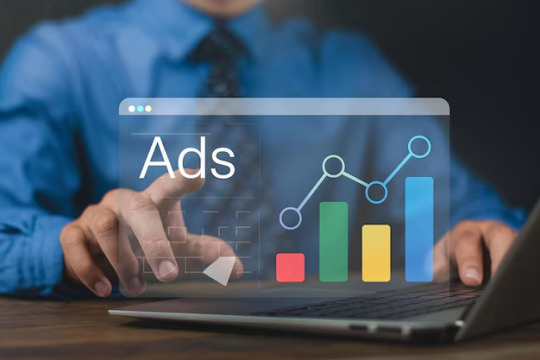
Google Ads is an essential tool for businesses looking to increase online visibility, drive traffic, and boost sales. However, choosing the right bidding strategy can make or break your campaign. With Google’s robust suite of bidding options, it’s crucial to align your strategy with your business objectives. In this blog, we’ll explore three primary bidding types—CPC, CPM, and Smart Bidding—to help you decide which is the best fit for your goals.
1. Cost-Per-Click (CPC): Perfect for Driving Traffic
CPC bidding focuses on paying for each click your ad receives. It’s ideal for businesses aiming to drive website traffic or generate leads.
Manual CPC: Gives you complete control over your maximum bid for keywords. This is great for experienced advertisers who want to fine-tune performance.
Enhanced CPC (ECPC): A semi-automated option that adjusts bids based on the likelihood of a conversion, combining manual control with automated optimization.
Best for: Businesses with a limited budget or those prioritizing website visits over impressions.
2. Cost-Per-Mille (CPM): Best for Brand Awareness
CPM, also known as Cost-Per-Thousand Impressions, focuses on how many times your ad is shown, regardless of clicks. This strategy is commonly used for Display Ads and YouTube Ads, where the goal is to maximize visibility.
CPM works well for campaigns designed to increase brand awareness, ensuring your message reaches as many eyes as possible.
Viewable CPM (vCPM): Charges you only when your ad is viewable, offering better value for awareness-focused campaigns.
Best for: Brands launching new products or running campaigns to build recognition.
3. Smart Bidding: The Power of Automation
Smart Bidding uses machine learning to optimize bids based on real-time data like device, location, and time of day. It includes strategies such as:
Target ROAS (Return on Ad Spend): Optimizes bids to achieve a specific revenue-to-ad spend ratio.
Maximize Conversions: Adjusts bids to get as many conversions as possible within your budget.
Target CPA (Cost Per Acquisition): Focuses on maintaining a specific cost per conversion.
Best for: Businesses seeking efficiency and scalability without constant manual adjustments.
Which Strategy Should You Choose?
Your choice depends on your campaign goals:
Traffic-focused? Go for CPC.
Awareness-building? Choose CPM.
Conversion-centric with a large dataset? Leverage Smart Bidding.
By understanding these bidding strategies, you can make data-driven decisions to ensure your campaigns deliver maximum ROI. Test, analyze, and refine your approach to unlock the full potential of Google Ads.
0 notes
Text
How Anyword Helps Product Marketers Boost Campaign Performance
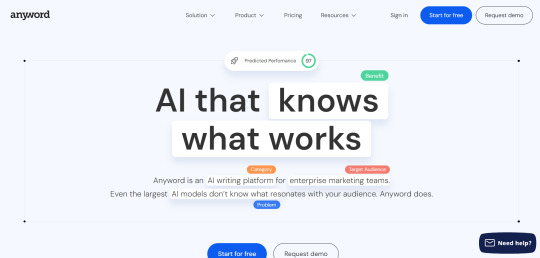
Launching a new product requires engaging content that resonates with the target audience. Anyword provides an AI-driven solution to streamline product marketing by generating on-brand content and predicting the effectiveness of different messaging, ensuring the best possible outcomes.
Problem Statement: Product marketers need to create a significant amount of content for product launches, from ads to email campaigns. Crafting the right messaging that connects with the audience while maintaining brand consistency can be challenging and time-consuming.
Application: With Anyword, product marketers can quickly generate content for ads, landing pages, and email campaigns. For instance, during a product launch, Anyword’s AI can create multiple versions of ad copy, each optimized for different audience personas. Its Performance Prediction feature provides insights into which version is most likely to succeed, reducing the need for manual A/B testing.
Outcome: By using Anyword, product marketers can ensure that their messaging is on-brand and effective, resulting in higher engagement and conversion rates. Anyword streamlines the content creation process, enabling faster product launches and greater audience reach.
Industry Examples:
Tech Startups: Use Anyword to generate targeted ads that highlight key product features, driving awareness and conversions.
Retail Brands: Leverage Anyword to create email sequences that introduce new products and engage customers.
SaaS Providers: Generate landing page content that aligns with customer needs, boosting trial sign-ups and demo requests.
Additional Scenarios: Anyword can also be used by e-commerce businesses to create product descriptions, by agencies to manage multiple client campaigns, and by financial institutions to create engaging newsletters.
Discover how Anyword can elevate your product marketing campaigns and improve results.
Start today at aiwikiweb.com/product/anyword/
#ProductMarketing#Anyword#AIinMarketing#ContentGeneration#CampaignOptimization#PerformancePrediction#ConversionOptimization#DigitalAdvertising#MarketingStrategy#AIWriting
0 notes
Text
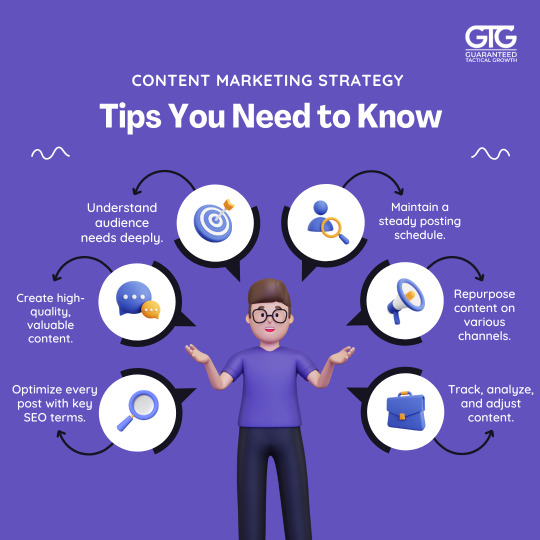
6 Proven Tips to Elevate Your Marketing Strategy Discover 6 powerful tips to enhance your marketing strategy! Learn how to connect with your audience, create valuable campaigns, optimize for SEO, and boost brand visibility. Whether you’re running digital marketing campaigns or building long-term growth plans, these tips will help you succeed. 🚀
#MarketingStrategy#DigitalMarketingTips#CampaignOptimization#SEO#AudienceEngagement#ContentMarketing#BrandAwareness#MarketingPlan#GoToGroww
0 notes
Text
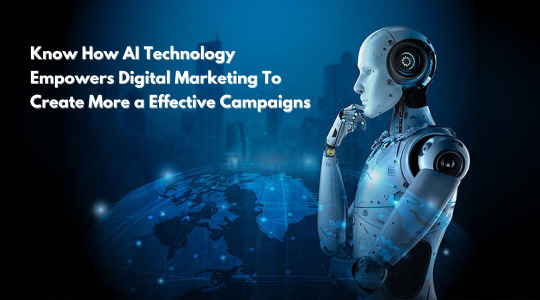
Know How AI Technology Empowers Digital Marketing To Create More a effective campaigns
Introduction
Artificial Intelligence (AI) advertising offers deep understanding into the effectiveness of your advertising strategies by analyzing consumer data from a variety of sources such as social networks, market developments, and consumer behavior. Excellent workmanship data is essential for artificial intelligence to create client profiles and enhance marketing efforts. AI can assist marketers in providing the best service possible for those who visit their site in order to turn them into prospects. Online advertising is all about providing a consumer experience. AI can enhance assets, surprise customers with personalized content, and promote consumer retention and commitment. In AI-driven marketing, segmentation of viewers entails building consumer profiles through data analysis. This enables recruiters to create tailored plans for each group and make sure that content speaks to their particular needs.
Artificial Intelligence for Marketing
AI in digital marketing leverages artificial intelligence to automatically make decisions based on data collection, analysis, and observations of audience behavior and macroeconomic trends. This cutting-edge technique is revolutionizing digital marketing by enabling companies to operate more effectively and produce more individualized experiences than ever before.
From social media advertising to advertising technology, artificial intelligence (AI) has revolutionized nearly every aspect of digital advertising. While AI has been integrated into marketing strategies for over a decade, tools like ChatGPT and other recent advancements in natural language processing have elevated AI technology to a new level of prominence. A Social Media Marketing Agency can leverage AI marketing tools that utilize machine learning to analyze vast volumes of data and handle repetitive tasks, such as creating content for blogs or social media postings. By automating operations like these, agencies can increase productivity, expand their customer base, and ultimately improve return on investment.
Individualized Content Production
Artificial intelligence's capacity to produce personalized information on a large scale is among its biggest contributions to digital advertising. Massive data sets can be analyzed by machine learning algorithms to learn about the statistics, tastes, and behaviors of a population. By accurately customizing content to the requirements and preferences of those they are targeting, advertisers may boost interaction and conversions. Understanding the AI impact on digital marketing is crucial in the ever-changing field of digital marketing. The development of artificial intelligence has given marketers access to a potent ally. AI-powered digital marketing solutions are transforming how companies interact with their customers, maximize the effectiveness of their efforts, and produce significant outcomes.
Personalized Content Creation:
Artificial intelligence's capacity to produce personalized information in large quantities is among its biggest contributions to online advertising. Massive data sets can be analyzed by AI algorithms to learn about the statistics, tastes, and behaviors of a population. Companies offering Website Development Services and Web Design Services can leverage AI to accurately customize information to the requirements and preferences of their target audience, thereby boosting engagement and conversion rates. Additionally, AI-powered predictive analytics solutions enable marketers to predict future trends in customer behavior and market volatility with remarkable precision. By analyzing past data and identifying trends, AI systems can forecast possible outcomes and suggest strategies to capitalize on new opportunities or mitigate risks.
Enhanced marketing efforts, AI assistants, and interfaces
AI-powered chatbots and digital assistants have grown to be invaluable tools for companies aiming to improve client satisfaction and retention. These intelligent bots can respond to questions, make recommendations, engage in real-time conversations with users, and even handle commerce. By automating repetitive processes and providing instant support, chatbots enhance productivity, boost client satisfaction, and free up employees for more complex tasks. Additionally, AI-powered digital marketing solutions utilize sophisticated techniques to instantly optimize ads. These systems deliver a tailored ad experience that maximizes return on investment by analyzing customer information, economic conditions, and ad performance metrics. Machines using AI continuously learn and adapt to refine targeting strategies, ad creatives, and bidding methods, ensuring the best possible results.
Sentiment analysis and Content curation
Artificial intelligence (AI)-driven content curation solutions search through vast amounts of online information to find relevant, high-quality content that marketers can share with their target audience. An SEO Agency in Chennai can leverage these technologies to provide tailored recommendations that align with specific interests, increasing engagement and loyalty. Additionally, AI-powered sentiment analysis systems can detect brand mentions in real-time and monitor social media, news, and other online sources to determine public sentiment. By analyzing text, image, and even audio data, these solutions offer insightful information about consumer views, emerging trends, and potential PR issues, enabling marketers and those providing Search Engine Marketing Service to act swiftly and effectively.
Optimization of Dynamic Pricing
AI-powered dynamic pricing optimization solutions are revolutionary for e-commerce enterprises. These instruments evaluate consumer behavior, rival pricing, and market demand to dynamically modify prices in real time. Businesses can increase profitability and consumer happiness by optimizing prices to maximize revenue while maintaining competition.
Producing material and data analysis
A wide range of internet advertising solutions include statistics; however, in order to obtain the whole picture, managers frequently need to export and fit data from multiple sources collectively like a puzzle. AI is able to gather, sort, and summarize vast volumes of data from many advertising platforms, streamlining the process for businesses offering Ecommerce Web Development Services. This efficiency helps save time when planning and creating collateral for campaigns. AI can also create marketing material, including blog posts, email copy, social media postings, and captions, which is particularly beneficial for digital marketers. Additionally, marketers can employ AI for multimedia tasks, including graphics, music, and even video, enhancing the overall digital strategy.
It's crucial to remember that not all material produced by AI is instantly suitable for publication. Whether it's the process of brainstorming a framework, or a couple of sentences to spark your imagination, the majority of marketers nowadays start with generative AI. AI writing should always be edited, fact-checked, and adjusted to seem more believable and consistent with the identity of the company.
Affordable Promotional Products:
Working around the clock, chatbots, and AI assistants have revolutionized customer service in banking, retail, and healthcare while drastically reducing expenses. Banks provide immediate account advice with this technology, while retailers utilize it to make suggestions in real-time. Communication and medicine both gain from increased efficiency without compromising quality. A New Frontier, the impact of AI on customer service, is further investigated.
These systems are always changing, using knowledge from previous exchanges to enhance current and future encounters, making them an essential part of customer support. Internet Marketing Services in Chennai can leverage this clever system to closely analyze the results of several campaigns and identify the best marketing avenues. By doing this, it guarantees that every dollar spent is utilized as effectively as possible, resulting in a marketing strategy that has a greater impact and better financial results. This accuracy in allocating resources boosts the efficacy and reach of marketing initiatives while also saving money.
Business and Service Customisation:
This technology helps companies create goods that are future-ready by keeping one step ahead of industry trends. A Digital Marketing Consultant in Chennai can utilize predictive analytics to help businesses anticipate future market demands and take proactive steps to innovate. In marketplaces that are changing quickly, this forward-thinking strategy is crucial to staying relevant and competitive. By analyzing unique client data, a consultant can customize services and products, taking personalization to the next level. Businesses are thus able to provide extremely personalized experiences that connect with customers on a personal level by considering their individual tastes and demands. This personalization not only increases customer satisfaction and loyalty but also makes customers feel genuinely understood and appreciated.
Conclusion:
In conclusion, AI-driven digital marketing solutions are revolutionizing the marketing scene by providing hitherto unseen chances for companies to engage with their target market, optimize workflows, and spur expansion. Marketers can achieve unprecedented levels of campaign efficiency, personalization, and effectiveness by leveraging AI. The potential for innovation in digital marketing is endless as AI technology develops, pointing to a time when companies will be able to prosper in a highly competitive digital ecosystem.
There are several practical advantages to using AI in digital marketing. AI is changing the landscape of marketing in a number of ways, including streamlined processes, affordable techniques, and personalized experiences for consumers. But it's imperative to strike a balance between AI procedures that are automated and the invaluable human touch. Business may remain ahead of the competition in the digital marketing space and convert leads into devoted clients more quickly by carefully incorporating AI into your marketing efforts.
#AITechnology#DigitalMarketing#EffectiveCampaigns#MarketingInnovation#DataDrivenMarketing#AIInMarketing#SmartCampaigns#MarketingAutomation#CustomerEngagement#TargetedAdvertising#MarketingStrategy#DigitalTransformation#AIInsights#CampaignOptimization#MarketingTrends#BusinessGrowth#TechInMarketing#FutureOfMarketing#DigitalStrategy#MarketingSuccess
0 notes
Text

🚀 Mastering Google's Smart Ads to Skyrocket Your Campaigns! 🌟 #SmartAds #GoogleAds #DigitalMarketing
#SmartAds#GoogleAds#DigitalMarketing#PPC#AdvertisingTips#MarketingStrategy#OnlineAdvertising#GoogleSmartAds#CampaignOptimization#AdWords
0 notes
Text
Marketing Automation
Unlocking the Power of Marketing Automation: A Game Changer for Modern Businesses
In today’s fast-paced digital landscape, businesses are constantly on the lookout for ways to streamline their operations, enhance customer engagement, and boost overall efficiency. One of the most revolutionary tools that have emerged to address these needs is marketing automation. If you’re not already leveraging marketing automation, you might be missing out on one of the most powerful strategies available for modern businesses.
What is Marketing Automation?
Marketing automation refers to the use of software and technology to automate repetitive marketing tasks and workflows. This encompasses a range of activities including email marketing, social media management, lead nurturing, and customer segmentation. By automating these tasks, businesses can save time, reduce manual errors, and ensure a consistent customer experience.
The Benefits of Marketing Automation
Increased Efficiency: Automating routine tasks allows your marketing team to focus on strategic activities that require human creativity and insight. For instance, scheduling and sending emails can be handled automatically, freeing up time for more complex campaigns and analysis.
Personalized Customer Experience: Marketing automation platforms enable businesses to deliver highly personalized content and messages based on customer behavior, preferences, and interactions. This level of personalization helps in building stronger relationships with customers and driving higher engagement rates.
Improved Lead Management: With automated lead scoring and nurturing, you can effectively manage and prioritize leads based on their behavior and interactions with your brand. This ensures that your sales team spends time on high-potential leads, increasing the likelihood of conversions.
Data-Driven Insights: Automation tools provide valuable data and analytics that help you understand customer behavior, track campaign performance, and make informed decisions. This data-driven approach allows for continuous improvement and optimization of your marketing strategies.
Consistency Across Channels: Maintaining a consistent brand message across various channels can be challenging. Marketing automation ensures that your messaging is synchronized and consistent across email, social media, and other digital platforms.
Key Components of Marketing Automation
Email Marketing Automation: Automate the sending of promotional emails, newsletters, and follow-ups based on user interactions and triggers. This can include welcome emails, cart abandonment reminders, and re-engagement campaigns.
Social Media Automation: Schedule and manage social media posts across multiple platforms from a single dashboard. Automation tools can also help in tracking mentions, engaging with followers, and analyzing social media performance.
Lead Nurturing: Develop automated workflows that guide leads through the sales funnel. This might involve sending targeted content, offers, or reminders based on their stage in the buying journey.
Customer Segmentation: Segment your audience based on various criteria such as demographics, behavior, and engagement level. Automated systems can then deliver tailored content to each segment, improving relevance and effectiveness.
Analytics and Reporting: Utilize automation tools to gather and analyze data from your marketing campaigns. Generate reports that provide insights into performance metrics, ROI, and areas for improvement.
Getting Started with Marketing Automation
Define Your Goals: Determine what you want to achieve with marketing automation. Whether it's increasing lead generation, enhancing customer retention, or improving campaign efficiency, having clear goals will guide your strategy.
Choose the Right Platform: There are numerous marketing automation tools available, each with its own set of features and capabilities. Evaluate your needs and select a platform that aligns with your goals and budget.
Integrate with Existing Systems: Ensure that your marketing automation tool integrates seamlessly with your existing CRM, email, and social media platforms. This will help in creating a unified approach to your marketing efforts.
Create a Strategy: Develop a comprehensive marketing automation strategy that outlines your workflows, content plan, and performance metrics. Regularly review and adjust your strategy based on data and feedback.
Monitor and Optimize: Continuously monitor the performance of your automated campaigns and workflows. Use analytics to make data-driven decisions and optimize your strategies for better results.
Conclusion
Marketing automation is not just a trend; it’s a critical component of a successful modern marketing strategy. By automating repetitive tasks, personalizing customer interactions, and leveraging data-driven insights, businesses can achieve greater efficiency, enhance customer experiences, and drive better results. Embrace the power of marketing automation and watch your marketing efforts transform into a well-oiled machine that propels your business forward.
#MarketingAutomation#DigitalMarketing#MarketingStrategy#EmailMarketing#LeadNurturing#CustomerEngagement#MarketingTech#AutomationTools#DataDrivenMarketing#SocialMediaAutomation#CRMIntegration#BusinessEfficiency#PersonalizedMarketing#MarketingTrends#CampaignOptimization
0 notes
Text
Implementing Bayesian Analysis in Airbnb’s Marketing Strategy
The Power of Bayesian Analysis – Enhancing Airbnb’s Marketing Decisions
Bayesian Analysis is a powerful tool that Airbnb can use to refine its marketing strategies. By continuously updating the probability of various outcomes based on new data, Airbnb can make more informed decisions. For example, by analyzing customer behavior and adjusting marketing tactics accordingly, Airbnb can improve the effectiveness of its campaigns and ensure that resources are allocated efficiently. This method allows Airbnb to stay agile in a competitive market and respond quickly to changes in customer preferences.


#BayesianAnalysis#MarketingStrategy#AirbnbDecisions#DataDriven#CampaignOptimization#StatisticalModels
0 notes
Text

#InfluencerMarketing#DigitalMarketing#BrandAwareness#SocialMediaMarketing#Engagement#Conversions#MarketingStrategy#ContentCreation#CampaignOptimization#MarketingTips
0 notes
Text
OmniFunnels AI Review | The Ultimate Marketing Suite!
Welcome to my new blog post “OmniFunnels AI Review”. In today’s fast-paced digital world, running a stress-free and profitable online business requires more than just dedication. It needs cutting-edge tools designed to streamline processes, enhance outreach, and significantly boost revenue.
Enter OmniFunnels AI, a game-changing 8-in-1 marketing suite that promises to revolutionize how you approach your online endeavors. But does it live up to the hype? Let’s dive deep into the features, use cases, and real-world applications of OmniFunnels AI to find out.
Read the full review here>>>

#OmniFunnelsAI#MarketingAutomation#ArtificialIntelligence#SalesFunnels#CustomerEngagement#EcommerceSolutions#DigitalMarketing#CampaignOptimization#PersonalizedMarketing#BusinessGrowth#AutomationTools#AIInMarketing#OmniChannelMarketing#MarketingStrategy#SmartMarketing
0 notes